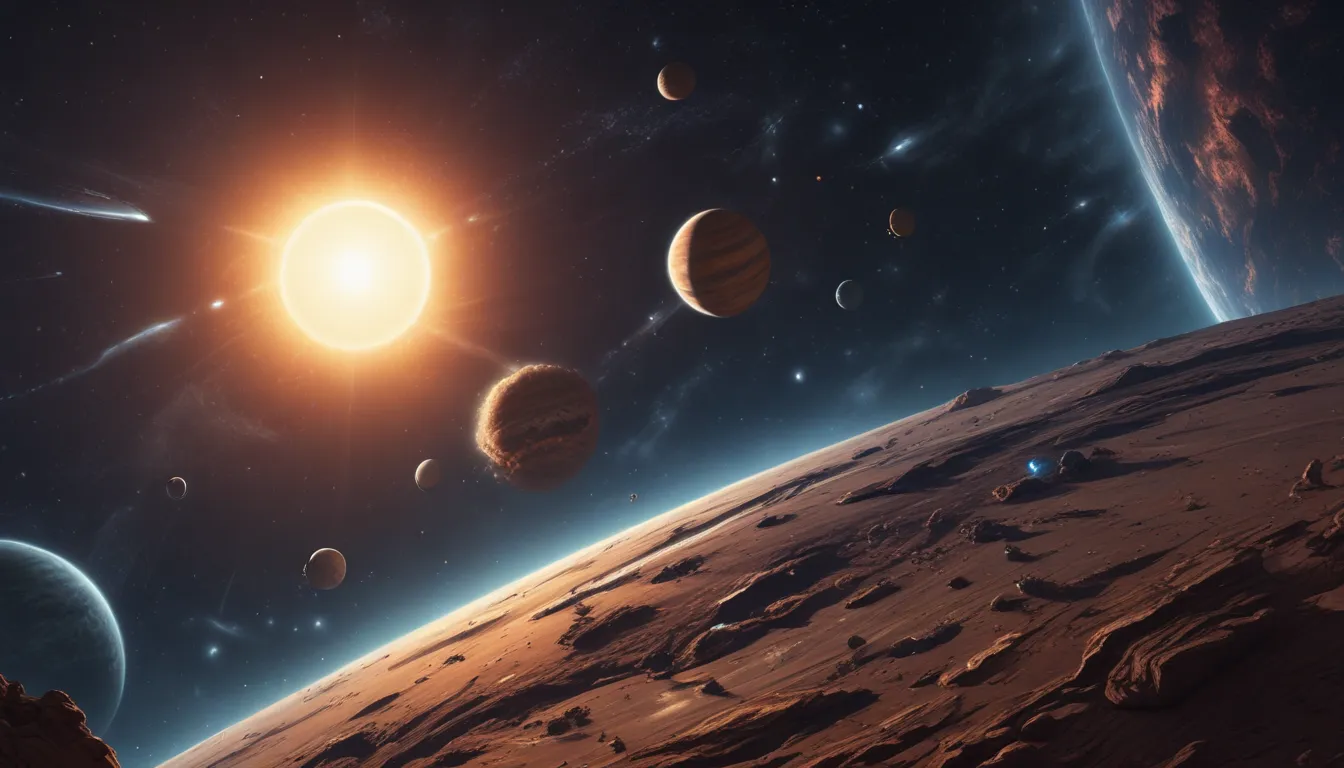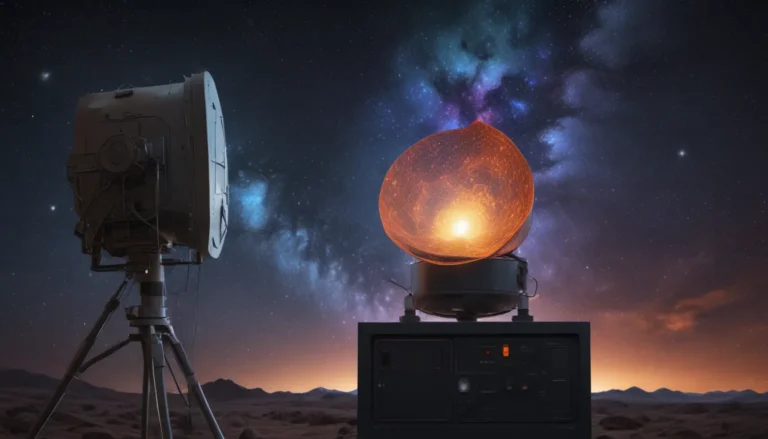The pictures we use in our articles might not show exactly what the words say. We choose these pictures to make you interested in reading more. The pictures work together with the words but don’t take their place. The words still tell you the important facts.
Welcome to a captivating journey through the wonders of our solar system! As we delve into the depths of space, we uncover fascinating facts, intriguing mysteries, and awe-inspiring phenomena that will leave you in awe of the universe we inhabit. From the scorching heat of Venus to the icy rings of Saturn, each celestial body holds its own unique charm and secrets waiting to be unraveled. Join us as we explore the enchanting realm of the solar system and expand our understanding of the cosmos.
Exploring the Sun’s Dominance in Our Solar System
In the vast expanse of our solar system, the Sun reigns supreme as the central star that provides light, warmth, and life to all its celestial companions. With a mass accounting for 99.86% of our solar system, the Sun stands as a beacon of energy that sustains the orbiting planets, moons, asteroids, and dwarf planets. It is a fascinating notion to consider that Earth, along with its counterparts, resides within the Sun's atmosphere, showcasing the intricate dance of celestial bodies in our cosmic neighborhood.
Unveiling the Enigma of Venus as the Hottest Planet
While one might expect Mercury, the closest planet to the Sun, to bear the title of the hottest planet, it is Venus that claims this distinction with an average temperature of 860 degrees Fahrenheit. The thick atmosphere of Venus acts as a thermal blanket, trapping heat and creating a scorching environment that defies expectations. This captivating aspect of Venus offers a glimpse into the diverse climatic conditions that exist among the planets in our solar system.
Delving into the Puzzling Time Scales of Planetary Days
The concept of a day, defined by a planet's rotation on its axis, varies across the solar system, with Mercury showcasing a unique phenomenon with its 58 Earth-day long day. Furthermore, the orbital periods of planets such as Uranus, spanning 84 Earth years, bring to light the intriguing seasonal cycles that unfold in the distant reaches of our cosmic neighborhood. These temporal intricacies add a layer of complexity to our understanding of planetary dynamics and orbital mechanics.
Journeying through the Seasons of Uranus: A 21-Year Odyssey
As Uranus completes its lengthy orbit around the Sun, the duration of a single season spans 21 Earth years, presenting a stark contrast to the familiar seasonal transitions experienced on Earth. The axial tilt of Uranus results in prolonged periods of sunlight deprivation for specific regions of the planet, offering a glimpse into the diverse climate patterns that shape the celestial bodies within our solar system. This extended seasonal cycle invites us to ponder the unique dynamics at play in the outer reaches of our cosmic realm.
Rediscovering Pluto’s Identity: From Planet to Dwarf Planet
Once revered as the ninth planet in our solar system, Pluto underwent a transformative reclassification due to its diminutive size, earning the title of a dwarf planet. This redefinition highlights the evolving nature of scientific understanding and classification criteria in deciphering the celestial bodies that populate our cosmic landscape. The discovery of additional dwarf planets further enriches our awareness of the diverse array of objects that inhabit our solar system.
Unraveling the Elemental Composition of Planets: Rocks, Gases, and More
The composition of planets within our solar system spans a spectrum of materials, with inner planets like Mercury, Venus, Earth, and Mars predominantly composed of rock and metal, while outer planets such as Jupiter, Saturn, Uranus, and Neptune consist primarily of hydrogen, helium, and other gases. Earth's unique blend of elements underscores the intricate balance of materials that sustain life on our planet, serving as a testament to the diversity of planetary compositions within our cosmic neighborhood.
Navigating the Vastness of the Milky Way: A Galaxy of Solar Systems
The vast expanse of the Milky Way galaxy hosts a staggering number of solar systems, with an estimated 100 billion systems orbiting distant stars. This revelation expands our perception of the cosmic landscape, showcasing the abundance of planetary systems that populate our galaxy. The exploration of exoplanets beyond our solar system unveils a tapestry of worlds waiting to be discovered, igniting our curiosity about the potential for life beyond our celestial borders.
Embracing the Complexity of Planetary Definitions: The Quest for Clarity
The classification of planets within our solar system remains a topic of debate, with varying definitions and criteria proposed by the scientific community. The International Astronomical Union's delineation of a planet based on orbital characteristics, mass, and clearing of debris introduces a standardized framework for planetary classification. However, ongoing discussions and diverse perspectives underscore the nuanced nature of defining celestial bodies within our cosmic realm, highlighting the dynamic nature of scientific inquiry.
Diving into Jupiter’s Moons: A Multitude of Celestial Companions
Jupiter emerges as a celestial giant within our solar system, boasting not only the title of the largest planet but also the highest number of moons, with a remarkable 79 satellites orbiting its massive presence. The gravitational pull of Jupiter exerts a captivating force on its diverse array of moons, drawing them into orbit around the gas giant and revealing the intricate interplay between planetary bodies and their celestial companions. This wealth of lunar diversity offers a glimpse into the complex dynamics of Jupiter's gravitational realm.
Unveiling the Ringed Beauty of Our Planetary Neighbors
While Saturn's iconic rings often steal the spotlight, other gas giants in our solar system, including Uranus, Neptune, and Jupiter, also exhibit ring systems that bear testament to the dynamic interactions between celestial bodies. The vertical orientation of Uranus' rings, the faint presence of Jupiter's rings, and the subtle elegance of Neptune's rings enrich our understanding of the diverse ring structures that embellish our planetary neighbors. This symphony of rings showcases the intricate beauty of planetary systems and invites us to marvel at the celestial wonders that adorn our cosmic landscape.
Embracing the Dynamic Nature of Our Solar System
Our solar system stands as a dynamic tapestry of celestial bodies in constant motion, with planets, moons, and asteroids navigating their orbital paths amidst the vastness of space. The Earth's orbital velocity within the Milky Way galaxy adds a thrilling dimension to our cosmic journey, underscoring the perpetual movement and evolution of celestial bodies within our cosmic neighborhood. As we reflect on the intricate dance of planets and stars, we gain a newfound appreciation for the ever-changing nature of our solar system.
Pondering the Existence of Extraterrestrial Life in the Universe
The vast expanse of the universe beckons us to contemplate the possibility of life beyond our solar system, with an estimated 100 billion galaxies and 300 billion stars in our galaxy alone offering a vast canvas for potential cosmic habitats. While the search for extraterrestrial life remains a tantalizing enigma, the sheer scale of the universe hints at the likelihood of other planets hosting life forms beyond Earth. This tantalizing prospect ignites our imagination and fuels the quest for uncovering the mysteries of the cosmos.
Celebrating Jupiter as Earth’s Cosmic Guardian
Jupiter emerges as a celestial savior in the annals of Earth's cosmic history, with scientific evidence suggesting that the gas giant has shielded our planet from catastrophic comet impacts on multiple occasions. Jupiter's gravitational pull acts as a protective force, deftly diverting potential threats and safeguarding Earth from cosmic hazards. This cosmic dance of planetary guardianship underscores the interconnected nature of celestial bodies within our solar system and reinforces the symbiotic relationships that shape our cosmic landscape.
Embracing Planetary Consistency and Anomalies in Orbital Mechanics
Solar system facts illuminate the remarkable consistency in planetary orbital patterns, with most planets following a similar trajectory around the Sun. The enigmatic case of Venus, which rotates anti-clockwise in contrast to its counterparts, introduces a mysterious anomaly that invites inquiry into its unique orbital behavior. The potential explanations for this deviation, from large collisions to cosmic perturbations, enrich our understanding of planetary dynamics and orbital mechanics, unveiling the intricate tapestry of celestial forces that govern our solar system.
Unraveling the Mysteries of Jupiter’s Iconic Red Spot
Jupiter's renowned red spot, often mistaken for a solid landmass, is in fact a massive storm system that has raged for centuries on the gas giant's surface. This colossal tempest, larger than Earth itself, offers a captivating glimpse into the dynamic atmospheric processes that shape Jupiter's meteorological landscape. The enduring nature of the red spot underscores the enduring power of Jupiter's atmospheric forces and presents a mesmerizing spectacle of cosmic phenomena that captivates the imagination.
In conclusion, our exploration of the solar system unveils a tapestry of cosmic wonders, from the colossal dominance of the Sun to the intricate dynamics of planetary interactions and celestial phenomena. Each fact and revelation adds a layer of richness to our understanding of the vast universe we inhabit, igniting our curiosity and awe for the mysteries that lie beyond our earthly realm. As we immerse ourselves in the marvels of the cosmos, let us embrace the beauty, complexity, and grandeur of our solar system, a celestial sanctuary that inspires wonder and curiosity in all who gaze upon its celestial splendor.






